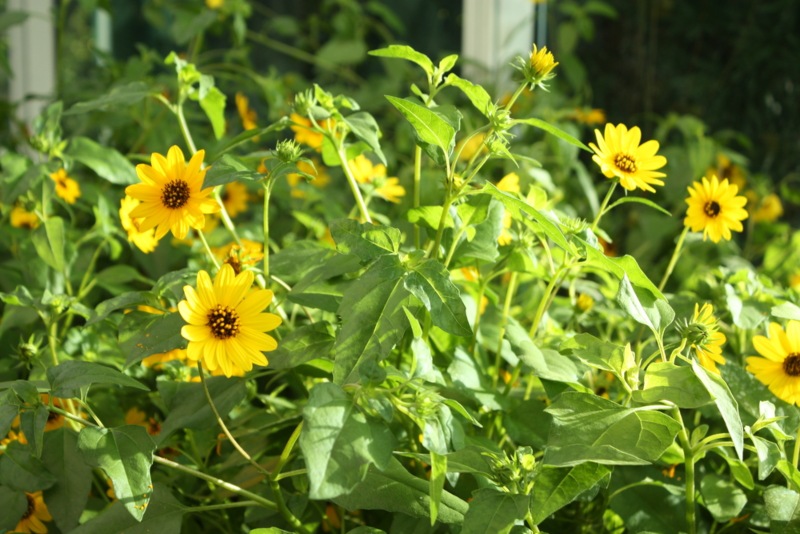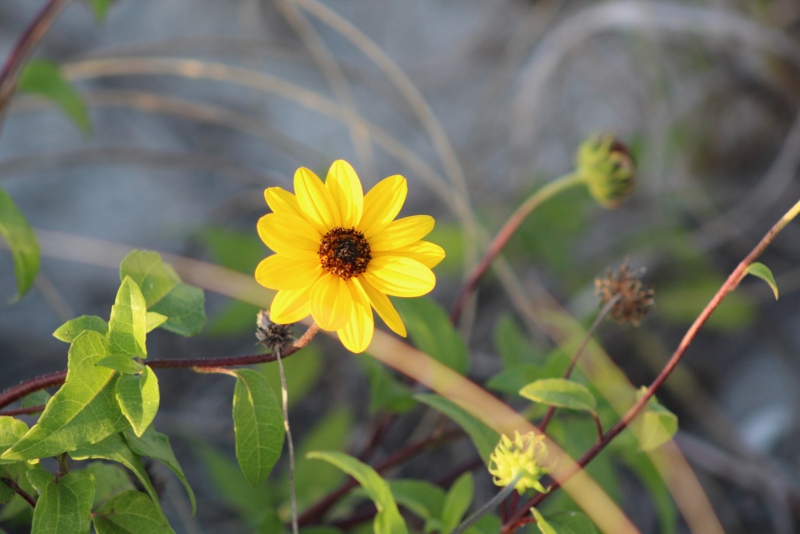
The beach sunflower is a great flower for adding color to your garden or home. Like the classic sunflower, each flower follows the sun through the sky. Its yellow flowers with brown middles bloom all year long. It is hardy outdoors in zones 9 and 10, and butterflies love it.
The beach sunflower makes a great groundcover due to its tendency to grow to a width of up to 4′. They are also great to use as borders and edging.
Light and Temperature Requirements
The adult plants generally require full sun. If you are growing from seedlings, they need dappled sunlight the first spring and summer and can then be moved to full sunlight in the fall to get used to having more sunlight. If your area gets freezing temperatures, it will die in the winter, but it will reseed itself for the following spring.
Watering
Though it’s named for the waterfront, beach sunflower is highly drought tolerant. It generally does not need to be watered when it grows outdoors. If it gets too much water, this can harm the health of the plant and cause it to grow more slowly. Beach sunflowers are also susceptible to sunflower rust, a disease of defoliation that is caused by getting too much water. Because it is a beach plant, it is well used to water with some salt in it. If it gets some salt spray, it won’t harm its health, especially if the soil drains well.
Soil & Fertilizing
As a beach plant, it does well if the soil is somewhat sandy. In fact, in nature, it is often found growing on sand dunes. If it is being planted in an area with no sand, add a few handfuls of sand to the soil before planting it. This will allow the soil to drain better and prevent its roots from staying in water. It generally does not need to be fertilized. Fertilizer can actually cause some wilting.

Deadheading and Pruning
The beach sunflower can be deadheaded when its blooms die in order to encourage it to keep creating blooms as well as to make the plant look better.
Many people grow beach sunflowers in order to harvest the seeds, as they contain a number of important nutrients.
To prune away the seeds, you need to wait until a flower has died. After that, you can remove that flower completely, cutting off the entire flower head. Then, place the flower over a plate or bowl and shake it to remove the seeds. Some stubborn ones are likely, and these can be removed with the fingers fairly easily.
Propagation With Cuttings
Beach sunflowers can be propagated with cuttings as well as grown from seeds.
1. To grow it from cuttings, moisten some potting soil or a mixture of sterile soil, perlite, and sand.
2. Take a beach sunflower stem that is 2″ to 4″ long and has not yet bloomed. It should have both young and mature leaves, and the foliage should be in good condition.
3. Take off the set of leaves that are the lowest so that the growth nodes become exposed. If there are any flower buds, pinch them off. Take the stem and push it into the soil so that the growth nodes are within it.
4. Place it in sunlight that is bright but indirect. Place clear plastic over it to hold the moisture in with a wooden stake holding it up so that it doesn’t rest on the stem.
5. Mist it daily until the plant grows roots. Once it does, remove the plastic and continue to mist. Keep it in dappled sunlight until the fall, and then move it to full sunlight.




